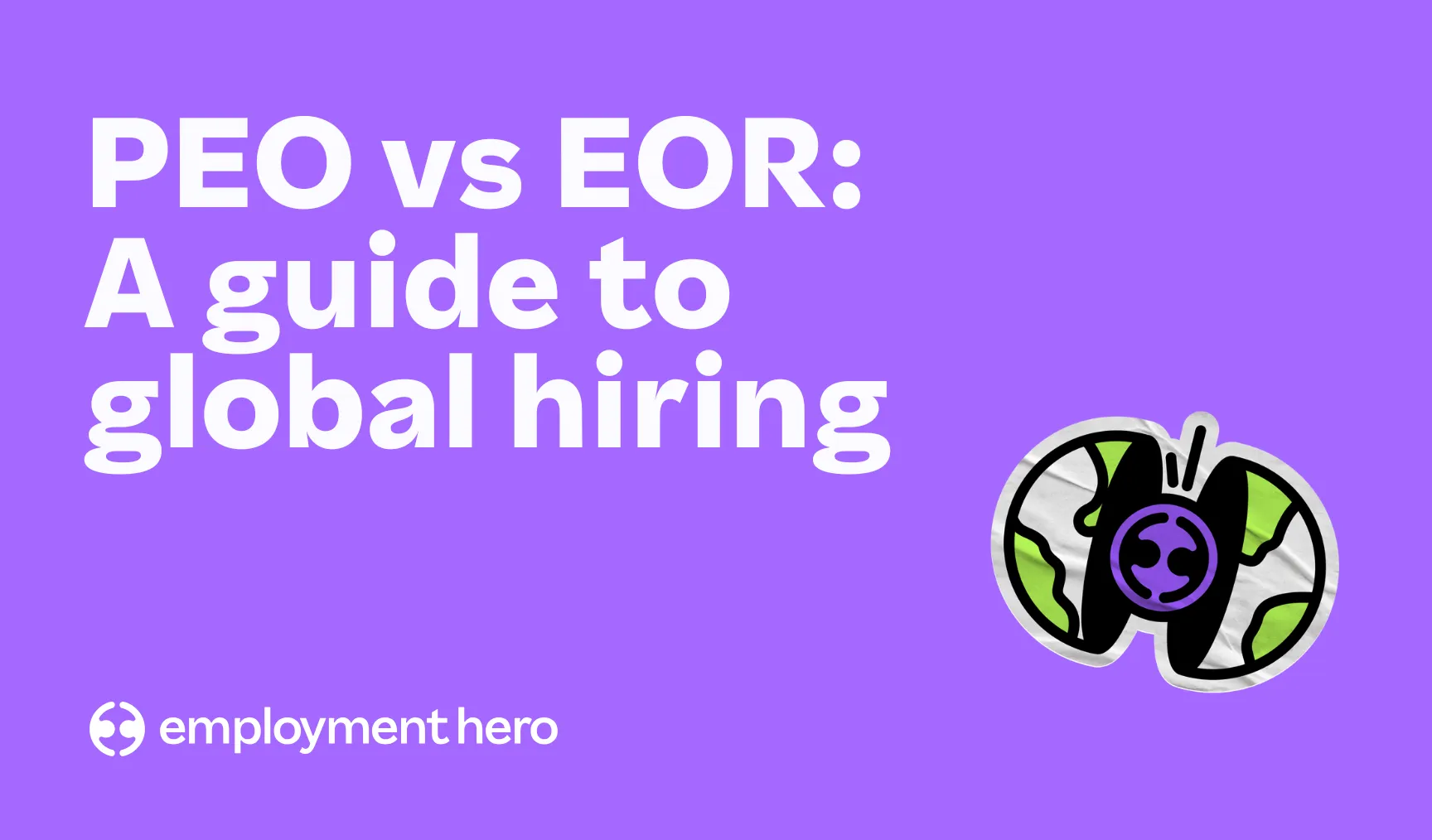Top 5 communication barriers in the workplace and how to overcome them
For a team to work well together, communication is key! Here’s how you can reduce communication barriers in the workplace.

Communication barriers in the workplace can have a negative impact on not only staff morale, but also business performance.
In fact, according to a Forbes study 49% of people think that ineffective communication impacts productivity, whilst 42% of respondents said it affects stress levels. Based on these numbers, it’s clear that communication has a direct impact on how well teams function.
Recognising the communication barriers that exist in your workplace, and adopting strategies to resolve them, will not only help to improve employee wellness, but also a more productive workplace.

Key points:
- Effective communication is vital in the workplace for increasing productivity, employee retention, fostering trust, mitigating conflict, and overcoming various communication barriers.
- Barriers to communication impact productivity, staff turnover, and professional relationships.
- Common communication blockers include physical, geographical, cultural, generational, and hierarchical.
- Tackling communication barriers in the workplace requires understanding employee communication styles, setting clear objectives, fostering inclusivity, and promoting two-way feedback.
Why is effective communication important at work?
Everything done at work starts with communication. Texts, emails, meetings, announcements…
“Great things in business are never done by one person. They’re done by a team of people.” — Steve Jobs
1. Increases productivity
Effective communication helps to eliminate unnecessary roadblocks or problems, increase overall productivity, and strengthens relationships in the team. Employees who communicate effectively with each other also work better together, and make decisions easier while discovering the best solutions.
Likewise, good communication allows managers to effectively convey their expectations, understand the skills and needs of their employees, and give clear directions when delegating tasks, enhancing the overall effectiveness of a project.
Statistics show that well-connected teams which leverage social technologies to improve communication and collaboration see an increase in productivity by 20-25%.
2. Increases retention
Effective communication leads to stronger employee engagement — when employees feel recognised, validated and supported at work, they are more committed in contributing towards organisational goals. In fact, employees who feel that their voice is heard are 4.6 times more likely to feel empowered to perform their best work.
Providing constant feedback between supervisors and employees, having open channels of communication, and sharing key updates or information with employees are all important enablers of employee engagement. This environment enhances an employee’s sense of belonging to the organisation, because they are constantly ‘in the know’ and well-informed about workplace changes, development opportunities and social gatherings.
When a culture of good two-way communication is established in a team or workplace, employees are able to share ideas freely or raise problems, be more engaged in their work, and become well-aligned with company objectives.
3. Facilitates stronger relationships built on trust
Communication is central to promoting camaraderie and collaboration. Teamwork begins by building trust, and effective communication helps to improve and strengthen relationships between team members — creating a positive and rewarding work environment.
Having a company culture which fosters transparency through open communication also helps to build trust between employers and employees. It allows employees to feel better connected to their workplace, gain a better understanding of their organisation’s strategy, identify with company values, all the while solidifying their sense of belonging by realising their role in the wider purpose.
4. Mitigates conflict
Conflicts often arise in the workplace due to a variety of reasons. Employees can feel misunderstood, or misunderstandings can be caused due to a difference in communication styles. The lack of understanding between employees on their differing communication styles can result in team members feeling disrespected, disregarded, or taken advantage of — which leads to unnecessary tension and conflict.
Having better communication within the team allows each individual to express and address their needs, lays the foundation for smoother collaboration, and increases employee engagement.
What are the most common communication barriers in the workplace?
There are several key barriers to communication in the workplace, we will explore them below.
1. Physical barriers
When you think about physical obstacles, you might assume this only applies to office based workers, but this is not the case. Regardless of if you work from home, or in the office, physical barriers come into play.

The environment in which you work can play a huge role in influencing interactions between coworkers. There’s a reason why the seating arrangements in an office are organised by teams — it facilitates effective collaboration. This makes it easier to bounce ideas off of eachother, ask questions, and build strong relationships.
For businesses in which cross-functional collaboration is integral to success, opting to sit employees with members of different teams, or hot-desk could help to increase communication.
Another factor that affects communication is how comfortable employees feel at their workplace. This applies to both office and remote workers. Therefore, it is important to ensure your employees have all the equipment they need in order to focus on their role. Interactions can often break down when people are uncomfortable or frustrated, so by reducing this, you are setting your team up for success.
Background noise is also another common barrier to communication in the workplace. Employees who work in the office may often struggle with colleagues having loud conversations nearby — which can be distracting when you’re trying to focus on a task. Those working from home may also be constantly disturbed by noise in their surroundings. In order to reduce this distraction, provide staff with headsets, or meeting rooms.
2. Geographical barriers
Time and distance primarily affect remote working teams. When coworkers are not working in the same office, or even the same time zone, interactions and conversations can become challenging.
Although not being in the same location poses challenges, it is still important to prioritise communication. This could be in the form of meetings, or async communication, such as sharing videos.
Allowing geographical location to impact interactions between teams can result in issues with developing trust. This is why it is so important to put processes in place to ensure visibility and transparency of tasks to be done and progress made.
3. Cultural differences

Cultural differences become more pronounced in global teams. Cultural norms, beliefs and values all come into play. These elements can result in challenges when it comes to conveying information and working together.
It might also lead to misunderstandings as individuals may misinterpret their colleagues’ actions. Global team members might find a comment or action by their colleague unusual, uncomfortable, or disrespectful, when it was not intended to be. For example, maintaining strong eye contact in professional settings can be seen as assertive and confident in some cultures, while it can be seen as aggressive and disrespectful in others.
The best way to approach cultural differences is from a place of kindness and respect, and by assuming the best in your colleagues. Opt to keep interactions open and clear to avoid confusion.
4. Generational barriers

Do the words ‘boomer’ and ‘millenial’ sound familiar? They can be hurtful remarks when used in derogatory contexts, and are often used when older generations have prejudices against the younger generation or vice versa. Ageism or reverse ageism is pervasive in the workplace, and this leads to communication barriers because it hinders collaboration between intergenerational teams.
Older employees may dismiss the opinions and efforts of younger employees, viewing them as inexperienced, lazy or quitters in the workplace; while younger employees view older employees as inflexible, out of touch, or having limited competency when it comes to using technology. This creates workplace silos with neither generation willing to communicate with each other.
5. Hierarchical barriers
Hierarchies are essential in organisations to ensure structure, but communication can be complicated between employees of varying status levels. Communication barriers are likely more prevalent in organisations where hierarchy is strictly enforced and respected, and employees of differing statuses can only converse through ‘official’ communication channels like emails.
Or worse, a top-down hierarchy where communication is one-sided means any information is simply passed down from the CEO to the rest of the company, without any input from employees who are stifled and silenced.
Employees in senior positions can be tempted to dismiss messages, feedback, or ideas from subordinates, simply because they are empowered to do so based on their hierarchical level and status. Conversely, subordinate employees might be reluctant and fearful of communicating honestly and authentically with their superiors, as they do not want to inadvertently offend them and hamper their own career opportunities.
5 ways to overcome communication barriers in the workplace
Now that you know the common communication barriers in the workplace, it’s time to find out how to overcome them.
1. Identify differing communication styles

There is no one-size-fits-all approach when it comes to managing employees. Each individual has their own style at work, and this extends to how they collaborate with their colleagues. Some may prefer talking face to face, while others prefer an email. Some may be direct and concise in verbiage, while others rely on the use of tone, facial expressions and gestures.
When individuals don’t recognise the needs of the other party, it creates obstacles. As a leader, you need to identify each individual’s communication style within your team to figure out a process that works best for everyone.
Personality tests can help your team members understand their own communication styles better, and also provide full transparency when everyone shares their individual results with the team. Popular options include the MBTI test and the DiSC Personality Test.
2. Establish OKRs
If you haven’t heard of OKRs before, they stand for Objective Key Results.
The objective is defined as the big goal to be achieved, and the key results help to measure the progress towards hitting that objective. They can be created top-down and bottom-up, and it’s key for company level OKRs to be established first.
How does this help with communication you ask? It helps remove communication barriers in the workplace when employees are informed and aware of the common goal they are all working towards. By having company OKRs, which are designed to be public and set for everyone in the business, all employees have a clear picture of what is expected of them.
This also facilitates employee OKRs to be established, where each employee has a say in how they can help achieve the company OKRs through their respective roles. OKRs help to build a culture of transparency, which in turn cultivates trust and team spirit when everyone is cognisant of their individual roles and responsibilities.
3. Embrace asynchronous communication

Remote work is increasingly popular and has lots of benefits. But it also comes with its challenges; introducing different time zones and working hours, and meetings in the middle of the night. Enter asynchronous communications!
With team members spread around globally in different timezones, embracing asynchronous working is key. Plus, it comes with a whole host of benefits, such as providing big chunks of focus time and ensuring progress is constantly made regardless of the hour in the day. There’s also plenty of ways you can set up a communication cadence for distributed teams.
Don’t forget the usage of digital platforms, which is essential for effective asynchronous communication. Be sure to incorporate communication tools for remote working so regardless of the time difference, your team members are getting their intentions conveyed accurately and smoothly across.
Keen to find out more on how you can better manage your team the remote-first way? Download our remote first workplace playbook today.
4. Create an inclusive workplace

Every employee wants to work in an inclusive workplace where they feel safe, accepted, and heard. Creating an inclusive workplace doesn’t just mean recruiting diverse talent — it goes beyond that and requires additional investment and support to ensure job satisfaction.
You don’t want your employees masking their authentic selves at work because they don’t feel comfortable or seen, this is when cultural differences and language barriers in communication arise, affecting overall productivity as well as employee retention and engagement.
If you want to leverage your team’s differences and capitalise on their unique backgrounds, ideas and opinions as strengths to propel your business forwards and upwards, fostering an inclusive workplace culture should be a key priority. Be open to learning new things about their culture, lifestyle, quirks, interests and beliefs from each and every one of them.
Check out our diversity and inclusion handbook for more helpful tips, to combat any possible workplace communication barriers that might arise from having a diverse workforce.
5. Encourage two-way feedback
Having consistent 1:1s with your employee is a great way to provide feedback both ways and facilitate communication without any emphasis on hierarchy. Rather than let their feelings and emotions bottle up without any recourse, 1:1s provide the opportunity for them to have open and honest conversations about their difficulties in a safe environment.
There are plenty of guided questions you can ask in a one-on-one meeting to help identify any barriers to communication your employee is currently facing. They’ll be able to raise any red flags they spot in internal communications, or point out any teammates that they are struggling to communicate with due to differing communication styles.
Ensure that you receive their feedback with empathy, and help them out by giving them effective feedback with radical candour. Dedicating time on a regular basis for teammates and leaders to connect and communicate is vital in creating a harmonious work environment. Download our bundle for more tips on how to run effective 1:1s.
Good communication in the workplace comes from a positive work environment
It’s clear that reducing barriers to communication in the workplace is not just important, but an essential. However, instead of dealing with issues when they arise, take a proactive approach by ensuring good communication practices are already in place.
With an all-in-one HR, hiring and payroll solution, you can streamline your processes with ease. With built in features focused on employee wellness, such as 1:1, employee rewards and recognition, as well as dealing with payroll, Employment Hero allows you to spend less time on admin.
The benefit of spending less time on admin? More time to put into the things that really matter – your people.
Contact us today and book a demo with one of our small business specialists!
Related Resources
-
 Read more: Setting employee expectations: Your guide to getting it right
Read more: Setting employee expectations: Your guide to getting it rightSetting employee expectations: Your guide to getting it right
Learn how to set clear employee expectations to boost productivity and engagement. Discover actionable tips and strategies for leadership success.
-
 Read more: PEO vs. EOR: A guide to global hiring
Read more: PEO vs. EOR: A guide to global hiringPEO vs. EOR: A guide to global hiring
Contents Expanding your business into new markets is a powerful growth strategy. But hiring talent globally introduces a maze of…
-
 Read more: How to build a global team without a local entity
Read more: How to build a global team without a local entityHow to build a global team without a local entity
Learn how to streamline your hiring and expand your UK business globally with an Employer of Record (EOR) without the…




















